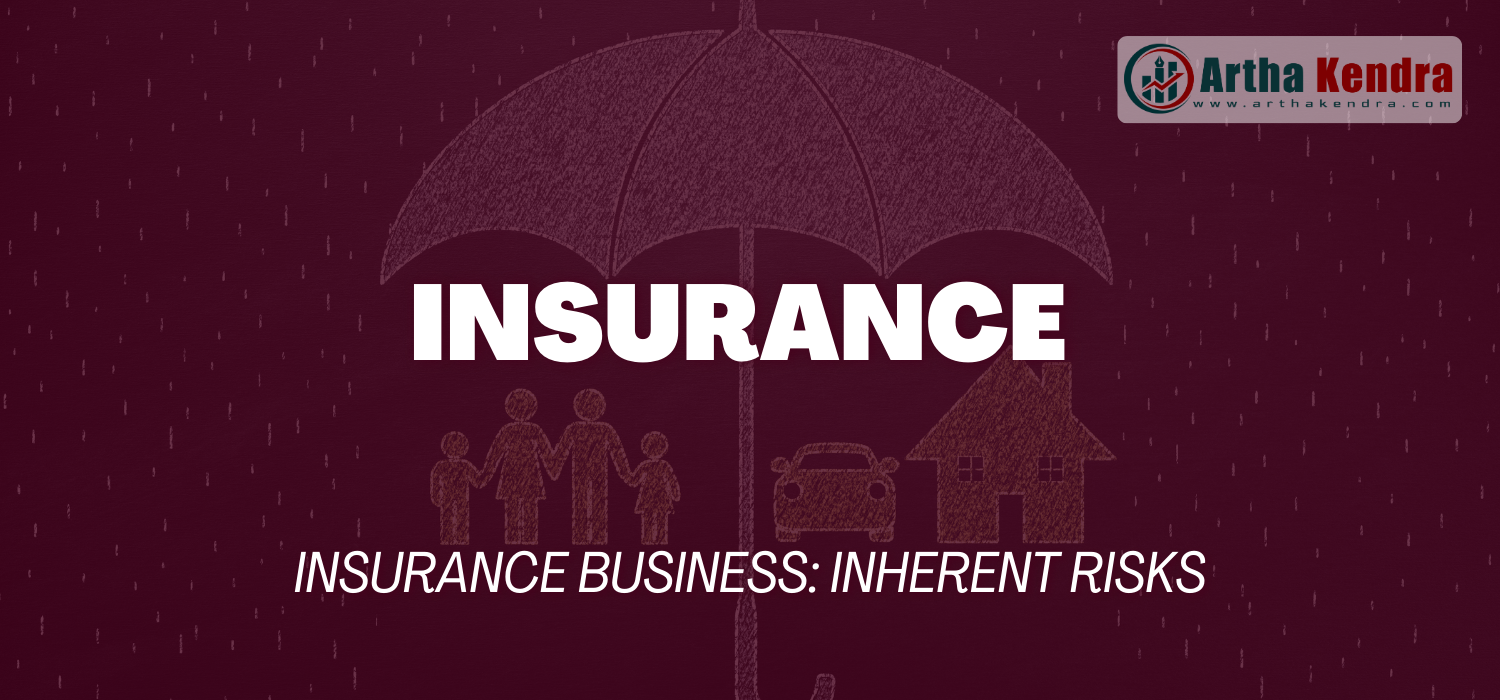What are the inherent risks of insurance business?

Kathmandu, Insurance business is a business full of risks. The future of the insurance business is precarious and uncertain due to the responsibility of managing the financial risks of other businesses and individuals. Underlying audits are indirect audits, including direct and indirect audits, for insurance companies to accept audits.
Insurance Risk
Life insurance risk is the risk of financial loss or adverse change. As a result of changes in the level or trend of any situation, the value of the insurance liabilities or the variability of the risk element is also increasing. The factors that determine the insurance premium under life insurance are: mortality, longevity, disease, expense, play and catastrophe risk.
Non-life insurance risk is the risk of loss due to inadequacy. Making wrong decisions in pricing, selecting, approving to insure or underestimating risk retention obligations of the insured article.
Market Risk
Market risk is the risk of adverse financial impact. Fluctuations in the value or volatility of financial instruments (deposits, bonds, shares) and other financial market elements including interest rates, share prices, property prices, foreign exchange rates also lead to business scrutiny.
Borrower risk
Borrower risk is defined as the potential loss incurred or incurred by the borrower. This type of assessment may occur when the party taking the loan or borrowing fails to fulfill its financial obligations on time. It would be wise to provide adequate security to minimize such risks.
Operational Risk
Operational risk is the risk of loss to the insurer due to the failure of the working manpower or wrong decisions. In the case of non-compliance with the provisions related to the operation or lack of control, monitoring and transparency in the operation of the internal operation, the operation inspection may occur.
Strategic Risk
Strategic risk is the loss or risk to the insurer from potential failure. Errors in strategic planning or execution, whether due to internal or external events, which resulted in the insurer not achieving its original objectives.
Compliance risk (legal and regulatory)
Compliance risk is the risk of loss to the insurer due to failure to comply. Such audits can be controlled through full compliance with legal and regulatory requirements.
Reinsurance Risk
The reinsurance company that has promised to bear the liability of the insured may face a financial crisis or when the reinsurance company refuses to make a claim. Therefore, insurers always prefer internationally recognized, old and experienced reinsurers. Nepal Insurance Authority has pushed the insurance industry to the path of uncertainty by imposing the provision of compulsory 100% reinsurance along with domestic reinsurance. Therefore, since the beginning of the current financial year, the reinsurance audit has emerged as the most sensitive audit for Nepali insurance companies.
Conduct Risk
Conduct risk is the risk of harm or bad consequences or improper behavior to current and future insureds or adverse consequences
Such audits may occur due to improper business conduct or business misconduct in the insurance market or by the insurer or its representative who does not want to follow the code of conduct determined by the regulator. Agents or employees knowingly hide any information about the insured and recommend for approval of the insurance proposal is under this scrutiny.
Money Laundering and Terrorist Financing
The risk of illegal money and assets being converted into legal funds is the risk of money laundering. Insurance that can be used as a means of making black money white is also an inherent risk of insurance business. Insurers can discourage the possibility of insurance being used to make black money by looking for the source of income from insurance premiums paid to purchase insurance or the property proposed to be insured.
Climate Risk
Natural disasters caused by climate change, pollution, epidemics, infections, damage to crops due to seasonal changes, damage caused by floods and landslides are the risks that can be caused by climate change. Due to the geography of Nepal, the risk of climate change is high. According to a study by the World Bank, the damage caused by climate change will cause a 2 percent loss in Nepal's gross domestic product.
Nepal Insurance Authority has started the first phase of implementation of provisions related to insurance based on insurance companies from the current financial year on the basis of these underlying insurances. Under the audit-based capital concept, which will be fully implemented by the year 2083/84, the insurer will have to assess the above audits and determine the financial liability.


